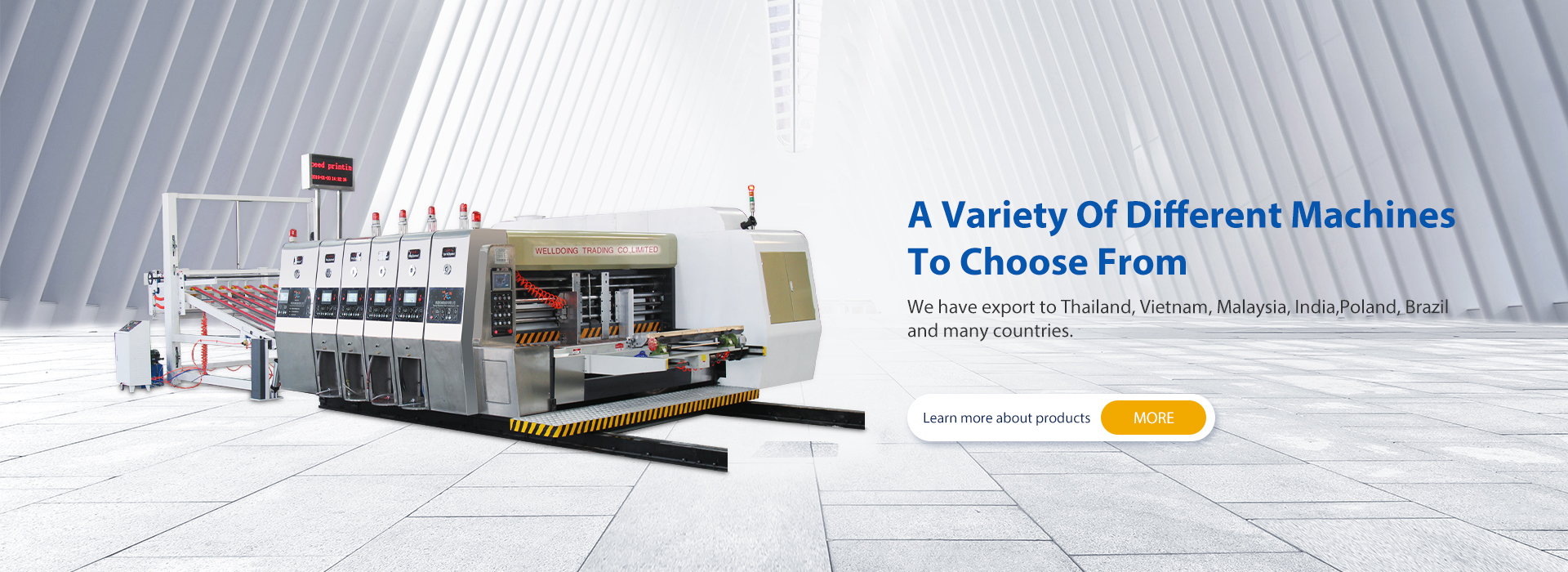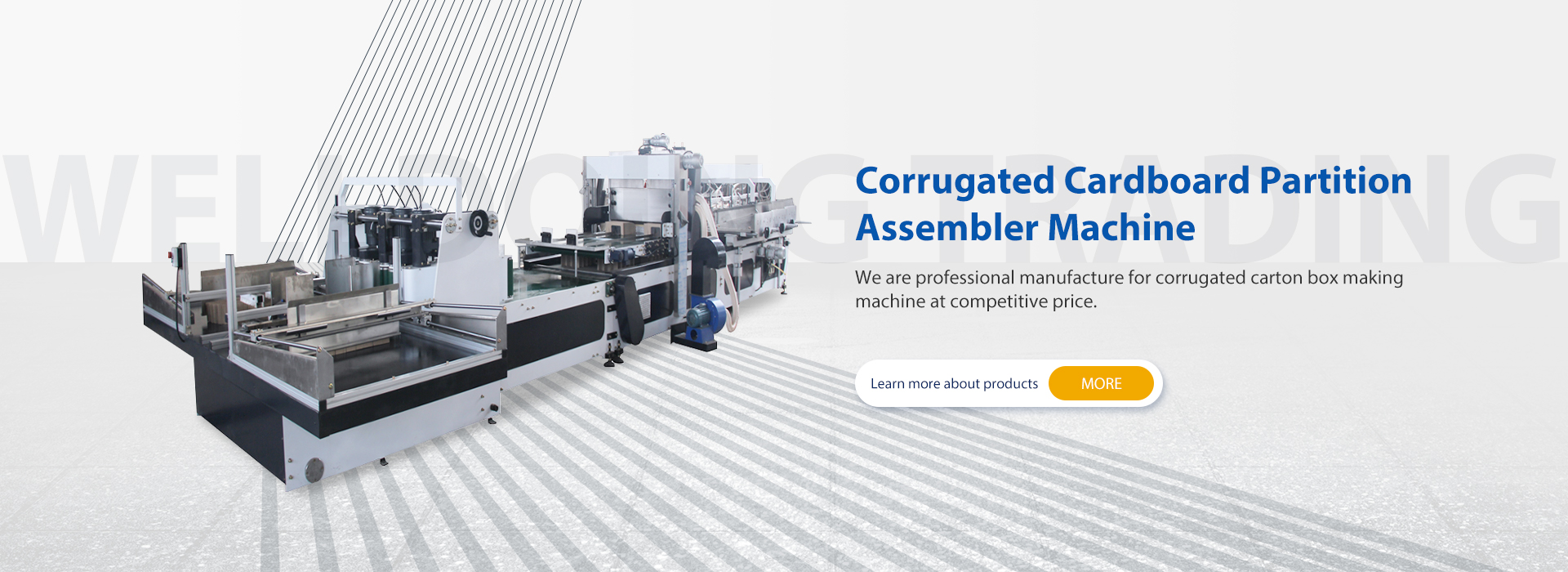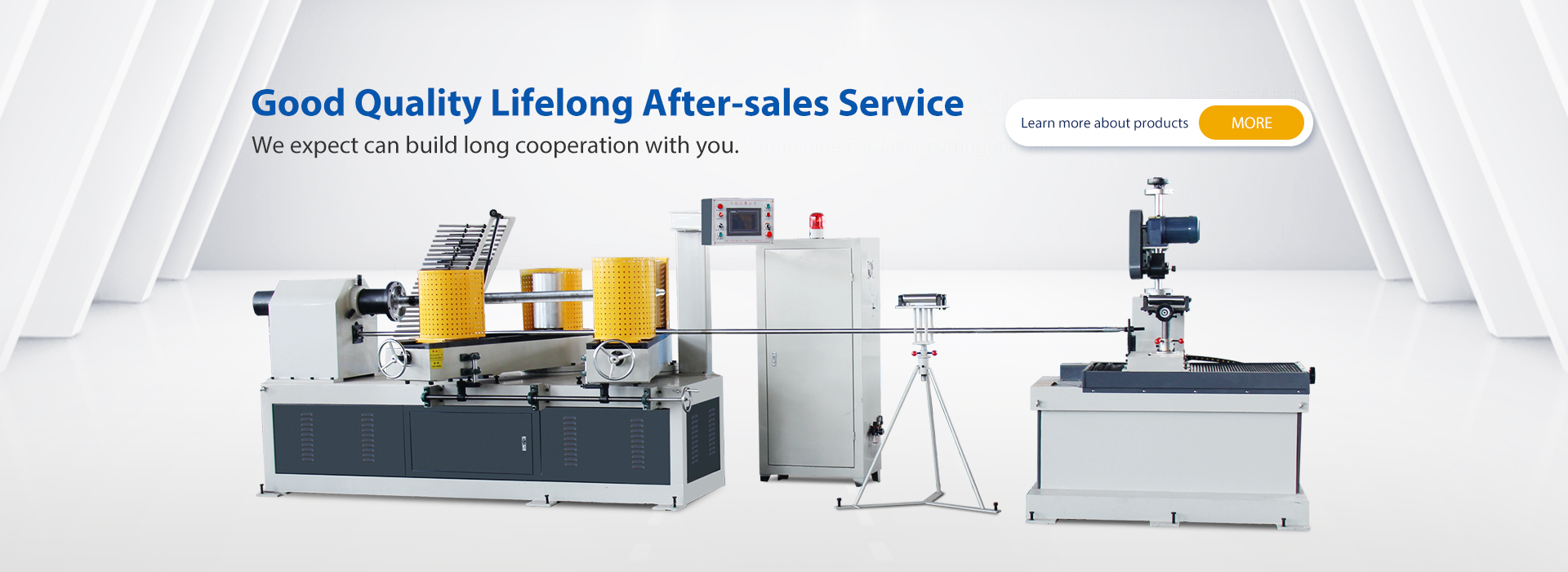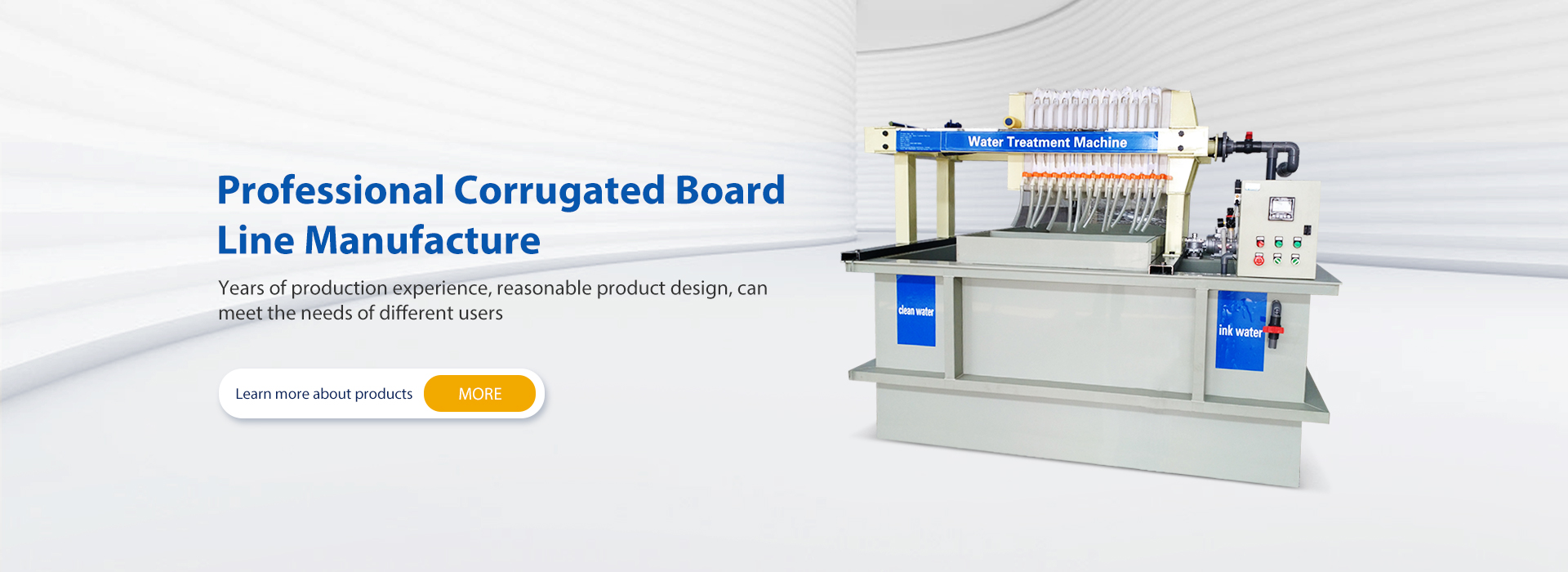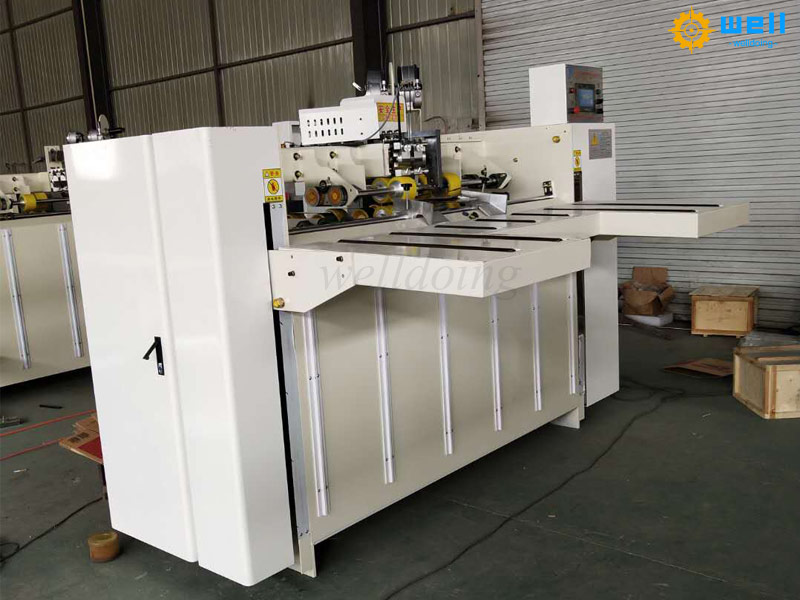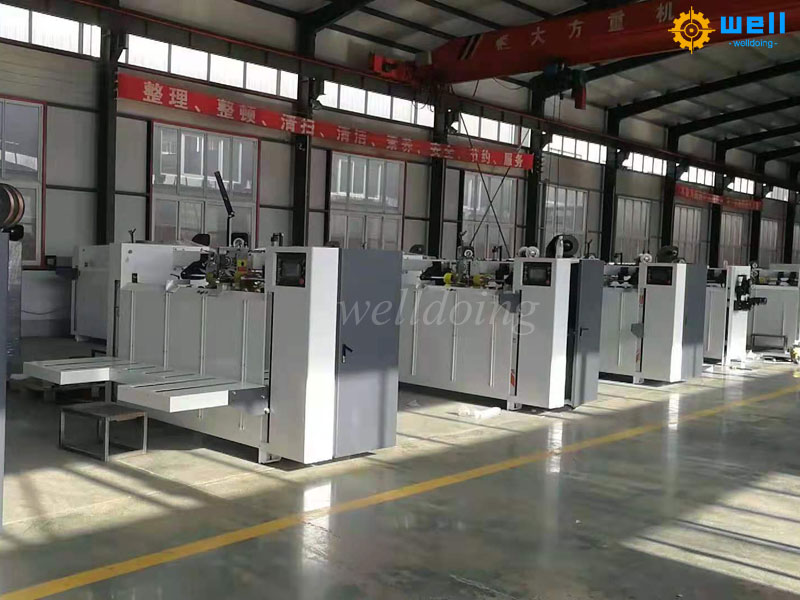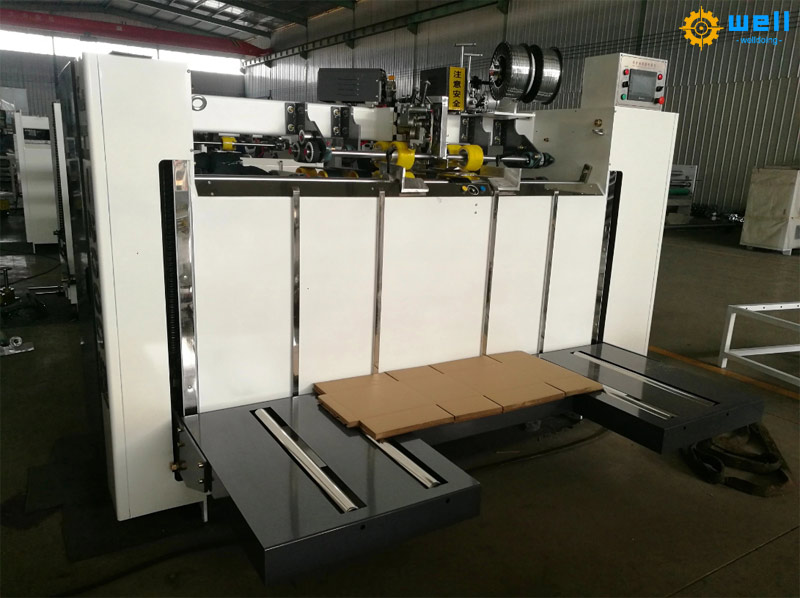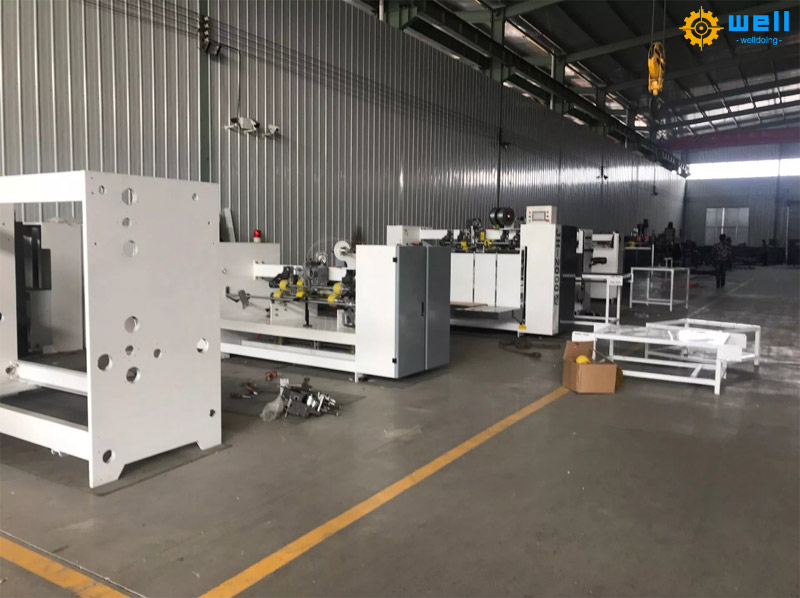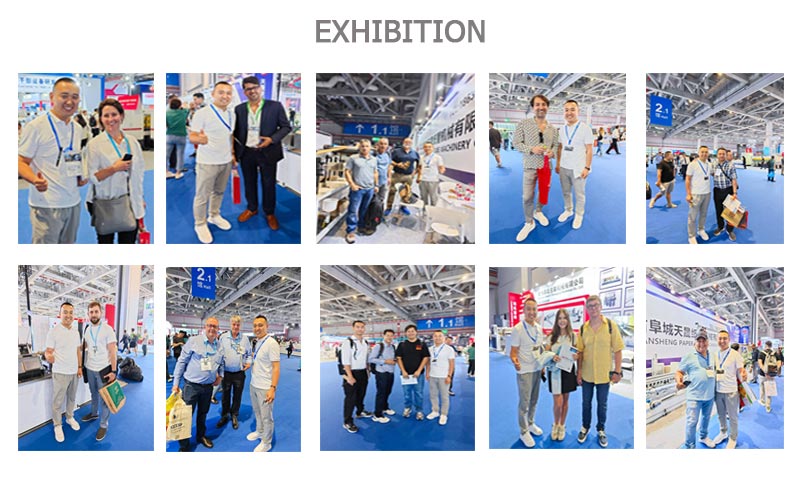The operation process of the semi-automatic stitching box machine revolves around five core steps: equipment preparation → parameter debugging → feeding operation → continuous processing → shutdown and finishing. The process is clear and easy to standardize.
1、 Preparation before operation: Safety and equipment inspection (key prerequisite steps)
Before operation, it is necessary to ensure that the equipment is in normal condition and the environment is safe to avoid malfunctions or safety accidents during processing.
Check whether the equipment power supply (380V/220V, matched according to the model) and air source (if equipped with pneumatic auxiliary mechanism) are firmly connected, without looseness or damage.
Confirm that the safety protection devices are intact: whether the nail head protective cover, paper feeding area protective fence, and emergency stop button (red, usually on both sides of the console and the machine) are complete and can be triggered normally.
Operator wearing guidelines: It is strictly prohibited to wear gloves (to avoid getting caught up in the paper feeding mechanism), long hair should be tied up, and cuffs should be tightened.
Manually rotate the machine spindle (or press the “test machine button”) and observe whether the moving parts such as the paper feeding roller, nail head, and chain are stuck and whether there is any abnormal noise.
Check the nail head components: whether there are residual nail threads inside the nail head, whether the punch is worn (if worn, it will cause the nail to not be firmly fastened), and whether the nail groove is clean and free of debris.
Check consumables: Ensure that the nail wire (usually galvanized flat wire, with specifications such as 2.0 × 12mm, matching the number of layers in the cardboard box) has been correctly installed and is free of rust or breakage; If it is a pneumatic model, check if the pressure gauge displays within the normal range of 0.4-0.6MPa.
2、 Parameter debugging: matching carton specifications with processing requirements
Adjusting key equipment parameters based on the size, number of layers, and stitching requirements of the cardboard boxes to be processed is the core step in ensuring processing quality.
Adjust the size and positioning of the cardboard box
Width adjustment: Release the “side panel locking knobs” on both sides of the body, push the side panel to a position that matches the width of the cardboard box (it is recommended that the cardboard box can slide smoothly without shaking left or right after insertion), and then lock the knobs.
Length positioning: Adjust the “front positioning plate” or “rear blocking plate” (different models have different designs) according to the “nail edge length” of the cardboard box, and position it with a ruler scale (error ≤ 2mm) to ensure that the nail starting position of each cardboard box is consistent.
Folding adjustment (if with folding function): If synchronous folding is required, loosen the locking screw of the folding wheel, adjust the spacing and angle of the folding wheel, so that the carton cover can be naturally bent along the folding wheel (the spacing between the folding wheels of 3-layer corrugated paper is slightly smaller than the thickness of the carton, and the spacing between the folding wheels of 5-layer paper needs to be adjusted appropriately).
Set nail parameters
Nail spacing adjustment: Set through the “Nail spacing knob” or digital buttons on the control panel (common range 20-80mm, commonly used for e-commerce cardboard boxes 50-60mm, and commonly used for heavy-duty cardboard boxes 30-40mm). After setting, you can click and try to make one nail to check if the spacing is uniform.
Nail head pressure adjustment: Adjust the nail head pressure valve (mechanical or pneumatic adjustment) according to the number of layers in the cardboard box (3/5/7 layers): when the pressure is too low, the nail cannot penetrate the cardboard box, and when it is too high, it will puncture the inner layer or bend excessively. It is advisable to use “the nail penetrates and the tip is flat and fits the cardboard box”.
Nail mode selection: Switch between “single nail/double nail” (double nail is suitable for load-bearing cardboard boxes) and “reinforced nail” (add 1-2 more nails to both ends of the cardboard box, which can be turned on through the “reinforced nail switch”) according to the needs.
Empty machine test run
Press the “start button” (green) and let the device idle for 10-20 seconds. Observe whether the nail head movement and paper feeding mechanism are smooth, whether the nail line feeding is continuous, and whether there is no “stuck or broken nail” phenomenon.
If it is an empty machine test, do not place the cardboard box and observe whether the nail head moves according to the set nail distance to confirm that the parameters are correct.
3、 Loading and single trial processing: verifying parameter accuracy
Before formal batch processing, it is necessary to confirm parameter matching through a “single trial run” to avoid batch scrapping.
Pre treatment of cardboard boxes
Organize the corrugated cardboard box pieces (usually “one piece” or “two-piece”) that have been die cut and pressed neatly, ensuring that the box cover is not damaged, the creases are clear, and easy to fold and align in the future.
Single loading test
The operator stands on the paper feeding side of the equipment, holding the cardboard box pieces with both hands, aligning the “to be nailed edge” of the cardboard box with the side baffle, pressing the front positioning plate tightly at the front end, and gently pushing it into the paper feeding roller.
The paper feeding roller automatically drives the cardboard box to move forward, and the nail head completes the nailing according to the set parameters. The processed cardboard box is sent out from the discharge side.
Sample inspection
Check the alignment of the cardboard box: whether the upper and lower covers are aligned, without any “wrong edges or skewed boxes”.
Check the quality of the nails: whether the nail points are skewed, the spacing is uniform, whether the nails penetrate the cardboard box and the tip is bent flat, and there are no “missing nails” or “floating nails (nails not compacted)”.
If it does not meet the requirements, immediately stop the machine and readjust the parameters (such as widening the side baffle to solve the misalignment, increasing the pressure to solve the floating nail), and repeat the trial until it is qualified.
4、 Batch continuous processing: standardized operation improves efficiency
After passing the trial processing, mass production should be carried out while maintaining a stable operating rhythm and monitoring the process.
Continuous feeding operation
Adopting the “continuous feeding” mode: After the previous cardboard box has fully entered the paper feeding mechanism, immediately align and position the next cardboard box piece, and push it into the paper feeding roller (pay attention to keeping your hands away from the paper feeding roller and nail head area to avoid getting caught up).
When operating alone: neatly stacked cardboard boxes can be placed on the paper feeding side for quick material retrieval; If it is a two person cooperation, one person is responsible for loading the materials, and the other person is responsible for organizing the processed cardboard boxes on the discharge side to avoid stacking.
Process monitoring and adjustment
For every 10-20 cardboard boxes processed, randomly select 1 box to check the quality and alignment of the nails. If there are problems such as “nail spacing deviation” or “stuck nails”, immediately press the “pause button” to handle them. Operation with faults is prohibited.
Monitor the remaining amount of nail wire: When the nail wire is about to run out (some models have a “missing nail alarm”), prepare nail wire of the same specification in advance to avoid stopping and waiting.
Dealing with unexpected situations: If the cardboard box gets stuck in the paper feeding mechanism, immediately press the “emergency stop button”, cut off the power, and then clean the stuck material. It is strictly prohibited to manually dig while the equipment is running.
5、 Shutdown and Closing: Equipment Maintenance and Site Organization
When processing is completed or there is a long downtime during the process, standardized operation is necessary to extend the service life of the equipment.
Shutdown operation
After the last cardboard box in the device is completely sent out, press the “stop button” to turn off the main power switch and air supply valve (if it is a pneumatic model).
If the machine is stopped midway and there are remaining nail threads, the remaining nail threads in the nail head can be manually removed to avoid getting stuck during the next startup.
Equipment cleaning and maintenance
Use a brush to clean the paper scraps and dust on the surface of the machine body, with a focus on cleaning the nail heads, paper feeding rollers, and chain debris (to avoid the accumulation of paper scraps affecting positioning accuracy).
Lubrication of moving parts: Add lubricating oil to chains, bearings, and other parts (using the recommended model in the equipment manual), lubricate once every 8 hours of operation to reduce wear.
Inspect vulnerable parts: Check if the nail head punch and paper feeding belt are worn, and replace them promptly if they are severely worn.
On site organization
Clean up processing waste (paper scraps, broken nails), neatly stack finished cardboard boxes, and classify and store consumables (remaining nail threads).
Fill in equipment operation records: Record the processing quantity, equipment failures, and handling status for easy maintenance and traceability in the future.
By following the above process, the semi-automatic box nailing machine can ensure efficient operation and stable output of high-quality glued cardboard boxes. Novices need to complete the complete process 3-5 times under the guidance of skilled personnel before operating independently.
If you are also interested in this machine,please don’t hesitate to contact us:
Overseas manager: Tom Wang
Email:cartonmachine.tomwang@aliyun.com
Phone/Wechat/Whatsapp:+86 13303078975
Post time: Sep-17-2025

